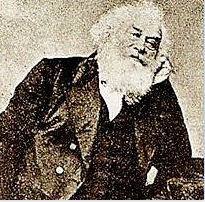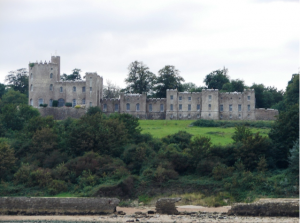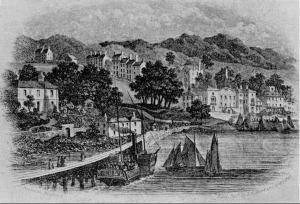John Mowlem (1788-1868)
John Mowlem
John Mowlem learnt his masonry skills from his father John who worked the stone mined from an area west of Swanage called Common Fields. He was the eldest boy from a family of six who lived at Carrants Court. In 1807, at the age of nineteen John decided that he should improve his situation by taking the advice from a friend based in London, Henry Manwell a nephew of Thomas Manwell the philosopher. John decided that before he moved to London he would develop his skills by taking a job at Norris Castle, his first job outside of Dorset. William Goodrich bought the estate in 1794. Norris Castle was built in 1799 and sits in 225 acres of land, with a mile of waterfront.
After he had been at work in the Norris Castle Quarry for some while Mowlem was spotted by James Wyatt who recommended John to to Henry Westmacott a well known sculptor-mason working for the Government Masons Works in London. John jumped at the opportunity and took up the position of mason.
In 1811, Henry Manwell’s sister Susannah visited her brother, by then living in London and working as the rate collector for St. Marylebone. Inevitably this brought her into contact with John Mowlem, to whom she soon found herself attracted, and in 1812 he and Susannah were married.
in 1816, the Government Masons Works had contracts for work at Greenwich and Kensington Palaces, the Royal Mews and Somerset House. For all these contracts in the capital Mowlem was made foreman over all of the workers .
In 1823, he leased a wharf in Pimlico Basin, now the site of Victoria Station forecourt and started his own business importing Purbeck Limestone, York sandstone and Aberdeen granite. Later he moved to offices and a yard at Paddington Basin next to the Grand Union Canal, which remained his headquarters for the rest of his life.
In 1839-40, Mowlem started his first major job it was the contract to re-pave Blackfriars Bridge with Guernsey granite setts. To ensure a reliable supply he bought an acre of land in Guernsey in the north of the island and moved there for eight months in 1839 to supervise the removal and shipping of granite to London. The task was completed in June 1840 5.
Despite retiring in 1845 to Swanage, Mowlem kept a close eye on the metropolitan paving contracts. He attended committees himself when necessary and travelled to inspect quarries — in 1847 alone he needed 50,000 tons of Guernsey granite.
In 1848, a there was a noticeable expansion in the firm’s activities and the Mowlem Company secured a dominant position in the supply of granite.
John Mowlem
John Mowlem learnt his masonry skills from his father John who worked the stone mined from an area west of Swanage called Common Fields. He was the eldest boy from a family of six who lived at Carrants Court. This house is still present at Court Hill on the left hand side as you descend the hill. At the time of his birth this Hill was called Carrant’s Hill. His father married Hannah Froom in 1872. She grew up at Ulwell Mill and went to school at Corfe Castle and taught by a first rate schoolmaster Mr Burt. No doubt she helped to teach her own children. During John Mowlem’s apprenticeship (1800-06) Tilly Whim quarries were still in production and John would have been taught how to use gun powder when splitting the Purbeck Portland stone 4.
In 1806-7, John Mowlem a Swanage resident moved to the Isle of Wight to develop his skills by taking a job at Norris Castle Quarry on the Isle of Wight. Whilst there a sculptor/mason James Wyatt was impressed by Mowlem’s work and recommended him to Henry Westmacott, a well known sculptor-mason in London. Mowlem jumped at the opportunity and moved to London and worked for him 5.
His company had its first major job with a contract to re-pave Blackfriars Bridge with Guernsey granite setts 5. To ensure a reliable supply he bought an acre of land in the north of the island and moved to Guernsey and supervised the removal and shipping to London, until the task was completed in June 1840. He made a fortune from the purchase. One of the quarries cost him £50 for the freehold and he extracted half a million tons from it – a tenth of a farthing a ton (£0.001).
In 1845, Mowlem retired to Swanage and resided in Number Two Victoria Terrace, next door to his old friend Robert Burt. During his retirement he kept a close eye on the metropolitan paving contracts, attended committees himself when necessary and travelled to inspect quarries throughout this period.
From the above image, west of the Royal Victoria Hotel, is Victoria Terrace (built between 1835-1837) Number Two was modified in 1844 for John Mowlem to a double unit. On the roof of Number Two is John Mowlem’s astronomical observatory. Victoria Terrace was originally a terrace of five 4.
Mowlem died at his nephew’s house, Purbeck House, in 1868 at the age of 80.


